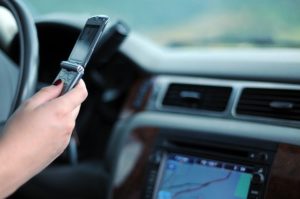Though it is difficult to track the exact number of deaths caused each year by texting and driving, the National Highway Traffic Safety Administration estimated that in 2019:
- Approximately 3,142 people were killed in crashes involving distracted drivers
- Driver inattention is a factor in 1.6 million crashes annually
- Texting while driving is the cause behind 1 out of every 4 crashes
Is it illegal to text and drive in Virginia?
Texting while driving is illegal and a primary offense in Virginia. A texting while driving conviction carries a $125 fine for the first offense and a $250 fine for second or subsequent offenses.
Is texting and driving as dangerous as drunk driving?
Studies have shown that texting while driving can be as dangerous as drunk driving. Typing a text message can delay a driver’s reaction as if the driver was legally intoxicated with a BAC of .08. A recent Virginia Tech study indicates that a driver is up to 23 times more likely to be in an accident when he or she texts while driving.
Why is texting and driving so dangerous?
The problem is threefold:
- Visual
- Mechanical
- Cognitive
When typing or reading a text message, a driver’s eyes are focused on the cell phone rather than the road. A vehicle traveling 70 mph is travelling almost 103 feet per second. At that speed, a driver sending a five second text message will travel nearly the length of two football fields without looking at the road.

A text message also requires a driver to temporarily remove their hands from the steering wheel. And finally, the brain cognitively focuses on the message being sent or received rather than driving.
The idea that the human brain is capable of multi-tasking is a myth. In reality, the brain switches back and forth between primary and secondary tasks. When you attempt to do two complex cognitive functions such as driving and texting, you are overloading your brain, and significant information is filtered out.
What is inattention blindness?
As a result of attempting to multitask, you miss visual cues such as stop lights, exits, and other vehicles. Your reaction time to what you do see is significantly slowed. The National Safety Council has named this problem “inattention blindness,” where a driver “looks” but does not “see.” The phenomenon has been equated with tunnel vision, where drivers look out the windshield, but fail to identify potential hazards and react in time to avoid them.
A person has no problem doing multiple activities at once as long as one or more of those activities are not cognitively demanding; for example, walking and chewing gum. However, studies have indicated that pedestrians using their cell phones are less aware of their surroundings and almost twice as likely to step out into traffic without looking than non-distracted pedestrians. Texting and driving are both cognitively demanding brain functions that should not be done simultaneously.
Regardless of the law in your state, put down your cell phone until you reach your destination. No text message is worth dying over. If you or a loved one have been injured by a distracted driver, you may be entitled to compensation. Call Allen & Allen today for a free consultation, at 866-388-1307.





